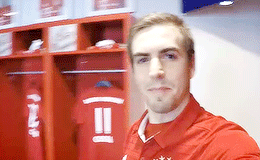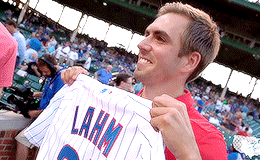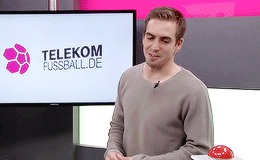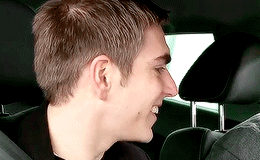Photo




A team that has done a lot against racism. That since the beggining didn’t follow the rules because knew those rules were WRONG. It’s awful to see that it’s still something that has not been erased completely.
- In 1923, Vasco da Gama won the Championship, the black jersey represents respect and equality. First team to win having black players.
- Pelé, biggest football player said that he’ll always be grateful for the opportunity the team gave to him because in 1957 the other brazilian teams still didn’t like to have black players.
- The Historic Response: in 1924 Vasco da Gama was pressured to ban some football players that were not considered adequate to play in the aristocratic league because of their race and social status, the president of the club stood by his players’ side and refused to comply with the racist demands. The letter became known as The Historic Response.
- Vasco was the first club to elect a "non-white" president, Cândido José de Araújo, in 1904, re-elected the following year. He fought against racial prejudices and in our 20s, contributing decisively to football leaving an exclusive sport of descendants of English and youth of the aristocracy, and was the only one that had the courage of challenge or current system.
4 notes
·
View notes
Text
I’m so disappointed at Rafinha. It shows how some people only care about fame, popularity and dirt money.
To think that at the beggining of this year, this team caused this big tragedy to young innocent kids. They had built this shithole (against the law obviously) for this kids to live and when the tragedy happened, instead of getting a well deserved punishmet, they got solidarity by the local media. It’s so disgusting.
And instead of paying the family’s victims, they just spent lots of money with expensive players and aware of that, Rafinha still went for it. This is so sad.
The fact that the truth is brushed under the rug is sickening.
2 notes
·
View notes
Photo

“Respect and Equality”
In 1924 when the brazilian team Vasco da Gama was pressured to ban some footaball players that were not considered adequate to play in the aristocratic league because of their race and social status, the president of the club stood by his players side and refused to comply with the racist demands.
The team refused to play in the Elite League and wrote a letter defending their players.
“Those twelve players are young and almost all brazilian, in the beginning of their careers, and this public act of excluding them will never happen with the solidarity of the owners…”
The team continued to play in lower leagues and it became really popular. So the Elite League said they could join the league if they had their own stadium.
Vasco fans started raising fund to build São Januário stadium. The construction started in June 1926 and was completed in 11 months, in April 1927. With a total capacity of 50,000 spectators the stadium became the largest stadium in Brazil at the time.
23 notes
·
View notes
Photo

Captain Philipp Lahm, so underappreciated.
#Philipp Lahm#German NT#thomas müller#Bastian Schweinsteiger#toni kroos#manuel neuer#miroslav klose#Lukas Podolski
83 notes
·
View notes
Photo


Today is the 94th anniversary of Vasco da Gama’s letter against racism. It’s called “Historic Answer” because instead of agreeing with AMEA’s demands of removing the players, the President of Vasco said ‘NO’ to it.
"Rio de Janeiro, April 7, 1924. Office nr. 261 Hon. Mr. Arnaldo Guinle MD President of the Metropolitan Association of Athletic Sports
The resolution presented today by the press, token on yesterday meeting by the highest level of the Association which you so worthily preside, lead Club de Regatas Vasco da Gama in an inferiority situation, which absolutely cannot be justified either by a deficiency of our field, nor the simplicity of our headquarters, or the condition of a great number of our partners.
The privileges granted to the five founding clubs of AMEA and the manner the right of discussing and voting will be exercised, and future qualifying will be done, force us to expose our protest against that resolutions.
About the condition of expelling from our team twelve (12) of our players, the board of directors of Club de Regatas Vasco da Gama unanimously decided not to accept, expressing our disagreement with the reasons of a process to investigate the social position of our dealers, investigations led to a court which they had no representation nor defense.
We are sure you shall be, certainly, the first one to admit that it would be an unworthy act to sacrifice, despite our desire to join AMEA, some of those who fought to give us, among other wins, the city football championship of Rio de Janeiro, 1923.
These twelve young players, almost of all Brazilians, are in the birth of their careers, and the public act that can maculate them will never be practiced with the solidarity of those who rule the house that received them, nor under the flag they, with so much gallantry, covered with glories.
Accordingly, we are complaining to communicate to Your Excellency that we give up to be members of AMEA.
Your Excellence accept the assurances of consideration and respect from the one who has the honor to subscribe, from you. Acts VNR. Thank you
(A) Dr. José Augusto Prestes President "
Translation Source
#Vasco da Gama#football#sports#black history#brazil#iconic#never forget#pele#neymar#neymar jr#no to racism
1 note
·
View note
Video
youtube
In honor of Black History Month, here’s the song against racism in football.
I’m going to cheer Here I built my temple to win I’ve already fought for the blacks and factory workers. I faced you, I won, I made São Januário Black shirts that I keep in my memory Glory, fights, victories this is my story
What an honor to be I know I’m Vascaino, I’m glad You will never have the Cross, this is my baptism I had to fight against your racism See how great my feeling is And for love I built this monument
Translation by notquitesureworld
1 note
·
View note
Photo


Vasco has always been democratic, from its nuclei (black, white and red), which fit the idea of a communion of ethnic groups.
In 1904, Vasco inaugurated its pioneering trajectory. For the first time in the history of Brazilian sports clubs, a non-white was elected president. After the elections, the vascaínos had the honor, at a time when racism was a common practice in the sport, to lead the mulatto Cândido José de Araújo to the highest step of the club. Candinho, as he was affectionately called, president of Vasco, in his first term, from August 1904 to August 1905. Reelected, remained in charge until August 1906.
He fought against racial prejudices and in the 20s, contributing decisively to football leaving an exclusive sport of descendants of English and youth of the aristocracy, and was the only one that had the courage to challenge the current system.
source
1 note
·
View note
Photo


I did a research about brazilian’s team Vasco da Gama, a team who fought against racism in football in Brazil. Sorry about my lousy translation, my portuguese friend helped translate.
It seems like whenever there’s case of racism, it comes with excuses like “I’m just following the rules,” and it’s important to be that person to break them and say “No, I’m not gonna follow them.”

Vasco’s symbol. “Respect and Equality”
In 1923, Vasco became champion with a team formed by whites, blacks and “mulattos” players of different social classes.
Football in Brazil back then was a sport for the elites, and Vasco da Gama’s racially diverse squad didn’t appease them. In 1924 Vasco da Gama was pressured by the Metropolitan League to ban some players that were not considered adequate to play in the aristocratic league, notably because they were black or mulato and/or poor. After Vasco refused to comply with such a ban, the other big teams, created the Metropolitan Athletic Association (AMEA) and prohibited Vasco from participating unless it complied with the racist demands.
The former President of Vasco, José Augusto Prestes answered with a letter that became known as the Historic Answer, which revolutionized the practice of sports in Brazil:
“We are sure that your highness will be the first to recognize that it’d be undignified on our part to sacrifice in order to be part of the AMEA, some of our players who fought for us to have many victories, like the National Championship in 1923…
Those twelve players are young and almost all brazilian, in the beginning of their carreers, and this public act of excluding them will never happen with the solidarity of the owners…
In these terms we’d feel to comunicate your highness that we give up on being part of AMEA…”
Vasco da Gama continued playing in another league and became very popular. AMEA said they were still excluded from their league for not having their own stadium.
Vasco fans reacted by raising fund to build São Januário stadium and it started in June 1926 and was completed in 11 months, in April 1927. With a total capacity of 50,000 spectators the stadium became the largest stadium in Brazil.
The stadium then became a platform for huge national civil manifestations.
“My favorite team was always Vasco. They are the club which opened their doors to me at the start of my career” - Pelé.
33 notes
·
View notes
Text
I do not recognize Bayern without Lahm
0 notes
Photo


I did a research about brazilian’s team Vasco da Gama, a team who fought against racism in football in Brazil. Sorry about my lousy translation, my portuguese friend helped translate.
It seems like whenever there’s case of racism, it comes with excuses like “I’m just following the rules,” and it’s important to be that person to break them and say “No, I’m not gonna follow them.”

Vasco’s symbol. “Respect and Equality”
In 1923, Vasco became champion with a team formed by whites, blacks and “mulattos” players of different social classes.
Football in Brazil back then was a sport for the elites, and Vasco da Gama's racially diverse squad didn't appease them. In 1924 Vasco da Gama was pressured by the Metropolitan League to ban some players that were not considered adequate to play in the aristocratic league, notably because they were black or mulato and/or poor. After Vasco refused to comply with such a ban, the other big teams, created the Metropolitan Athletic Association (AMEA) and prohibited Vasco from participating unless it complied with the racist demands.
The former President of Vasco, José Augusto Prestes answered with a letter that became known as the Historic Answer, which revolutionized the practice of sports in Brazil:
"We are sure that your highness will be the first to recognize that it'd be undignified on our part to sacrifice in order to be part of the AMEA, some of our players who fought for us to have many victories, like the National Championship in 1923...
Those twelve players are young and almost all brazilian, in the beginning of their carreers, and this public act of excluding them will never happen with the solidarity of the owners...
In these terms we'd feel to comunicate your highness that we give up on being part of AMEA..."
Vasco da Gama continued playing in another league and became very popular. AMEA said they were still excluded from their league for not having their own stadium.
Vasco fans reacted by raising fund to build São Januário stadium and it started in June 1926 and was completed in 11 months, in April 1927. With a total capacity of 50,000 spectators the stadium became the largest stadium in Brazil.
The stadium then became a platform for huge national civil manifestations.
“My favorite team was always Vasco. They are the club which opened their doors to me at the start of my career” - Pelé.
33 notes
·
View notes
Photo

Philipp Lahm was 11 years old when he joined Bayern Munich. He arrived at Säbener Strasse full of enthusiasm and with the diminutive attacking midfielder Mehmet Scholl as his hero. The only problem was that Lahm soon found himself playing at full-back. The youngster had to rethink, he had to adapt. “I quickly realised that I couldn’t have Mehmet as my role model any more,” he once said, “so I changed it to Paolo Maldini instead.”
Quick-thinking and versatile; Lahm at 11 and Lahm at 30. Nothing and everything has changed.
41 notes
·
View notes
Photo

“Coutinho’s goal stunned us” - Lionel Messi
0 notes
Photo

25 notes
·
View notes
Video
tumblr
Let the kids have fun.
I'm Weidenfeller.
#philipp lahm#miroslav klose#thomas müller#Lukas Podolski#German NT#germany nt#die mannschaft#roman weidenfeller#matthias ginter#kevin großkreutz#erik durm#mario götze#mezut ozil
112 notes
·
View notes













